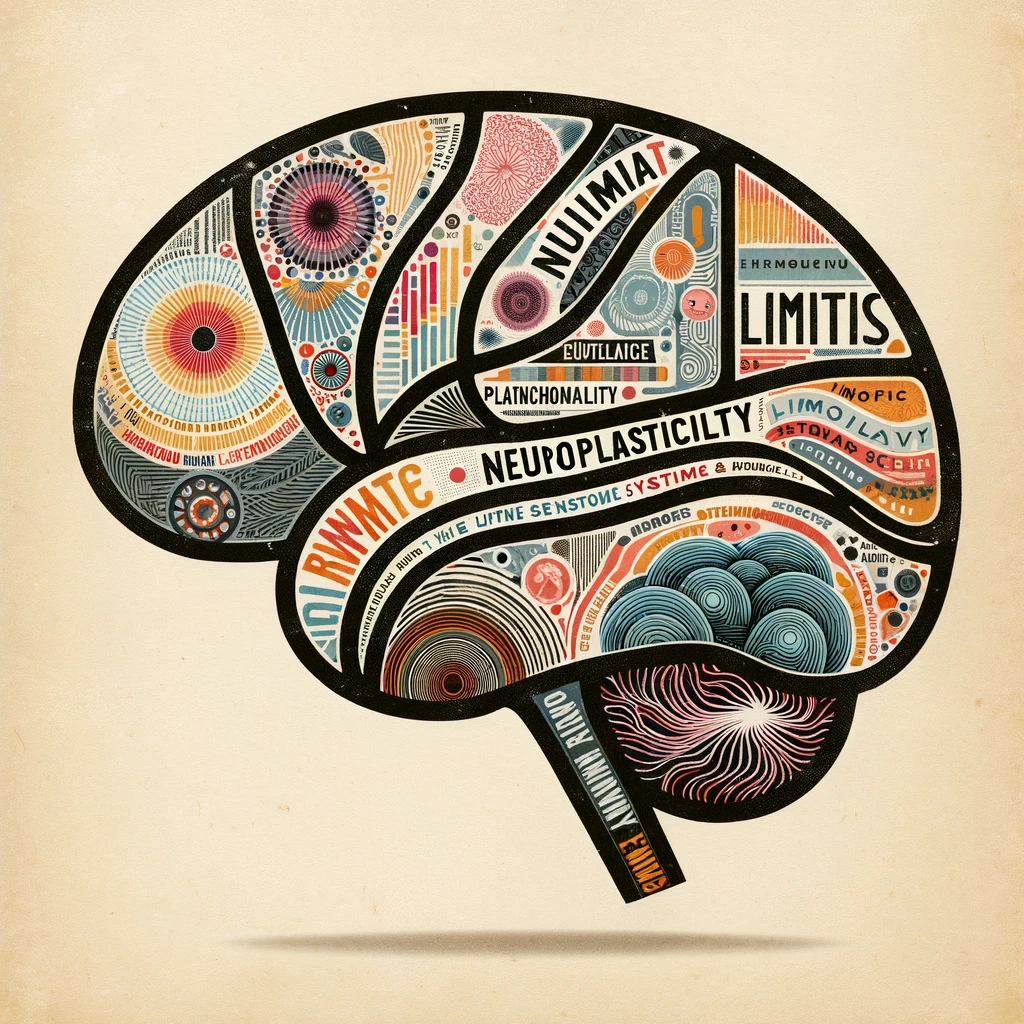Neuroplasticity, Brainwaves, and the Limbic System: Navigating the Brain’s Inner Workings
In the fascinating world of neuroscience, understanding our brain’s functioning isn’t just about unleashing one’s inner Sheldon Cooper. It’s about decoding the mysteries behind neuroplasticity, brainwaves, the limbic system, and our responses to stress. So, let’s embark on a 2450-word journey to unravel these concepts in a way that even our beloved pets might find intriguing if they could comprehend human language.
What is Neuroplasticity?
Imagine if your brain were a bit like Play-Doh. That’s neuroplasticity for you – the brain’s amazing ability to mold and adapt itself. This isn’t about your brain turning into a sculpture of Einstein (though that would be cool), but rather its capacity to reorganize and form new neural connections throughout life. Neuroplasticity occurs due to various factors such as learning, experiences, and recovery from injuries.
Why is Neuroplasticity Important?
This brain adaptability is crucial for several reasons:
Learning and Memory: Each time you learn something new, your brain forms new connections. It’s like adding new contacts to your phone – the more you have, the richer your interactions.
Recovery from Brain Injuries: Neuroplasticity allows the brain to compensate for lost functions and maximize remaining functions post-injury. It’s the brain’s way of saying, “I’ve got this!”
Neuroplasticity in Everyday Life
You’re engaging your neuroplasticity every day. Picking up a new skill, adapting to a new environment, or just altering a habit, your brain is continually reshaping itself.
What are Brainwaves?
Now, onto brainwaves. These aren’t the waves you surf on but are rather the rhythmic patterns of electrical activity produced by the brain. Think of them as the internal radio signals of your brain, broadcasting on different frequencies depending on what you’re doing.
Types of Brainwaves:
Delta Waves: These are the slowest brainwaves, associated with deep, dreamless sleep.
Theta Waves: Linked to creativity and emotional connection, these waves occur during light sleep or deep relaxation.
Alpha Waves: Present during relaxed states, these waves are like your brain’s ‘idle’ mode.
Beta Waves: The fast waves associated with active thinking, problem-solving, and focus.
Gamma Waves: The fastest of them all, gamma waves are related to heightened perception and consciousness.
How are Brainwaves and Neuroplasticity Related?
The relationship between brainwaves and neuroplasticity is like the dynamic between a skilled DJ and a dance floor. Brainwaves influence our state of mind, and our mental states can change our brain’s wiring – neuroplasticity in action.
When we’re in a state of deep relaxation (hello, alpha and theta waves), our brain is more receptive to forming new connections. It’s like our brain’s soil becomes more fertile, allowing the seeds of new learning and experiences to take root more easily.
What is the Limbic System and Why Do We Need It?
The limbic system is like the emotional processing headquarters of your brain. It’s a complex system of nerves and networks in the brain, controlling basic emotions such as fear, pleasure, and anger, and drives like hunger and sex.
Key Components of the Limbic System:
Amygdala: This almond-shaped cluster of neurons plays a key role in processing emotions, especially fear.
Hippocampus: Essential for memory formation.
Hypothalamus: Regulates emotional responses and basic drives like hunger.
The limbic system is crucial because it’s where our emotions and memories intertwine. It’s like the backstage of our brain’s theater, where the scripts of our emotional responses are written and directed.
What is Flight, Fight, or Freeze?
Flight, fight, or freeze – sounds like options in a video game, right? But it’s actually our limbic system’s survival mode. When we face a threat, our brain decides whether to fight it, flee from it, or just freeze, hoping the threat goes unnoticed.
How Does This Relate to Our Dysfunctional Limbic Systems?
Sometimes, our limbic system can be a bit overzealous, perceiving threats where there are none. This can lead to anxiety disorders, phobias, and PTSD, where the flight, fight, or freeze response is triggered inappropriately. It’s like having a smoke alarm that goes off every time you make toast.
Why Don’t Non-Human Animals Stay in Survival Mode Like Humans?
Here’s where humans and animals differ. Most animals return to their normal state once the threat passes. They don’t stew over past dangers or fret about potential future ones. Their limbic system knows how to turn off the survival mode once it’s no longer needed.
Humans, on the other hand, have the ability to ponder, ruminate, and worry. This means we can get stuck in survival mode, courtesy of our overactive limbic system and our penchant for overthinking. It’s like our brain keeps replaying the scary parts of a movie instead of moving on to the next scene.
Conclusion:
In the intricate dance of neuroplasticity, brainwaves, and the limbic system, we find the essence of our learning, emotional responses, and survival instincts. Understanding these concepts doesn’t just satisfy our curiosity; it empowers us to better manage our mental health, enhance our learning abilities, and understand the profound complexities of our amazing brains.
Sources
For more in-depth exploration, consider these sources:
“The Brain That Changes Itself: Stories of Personal Triumph from the Frontiers of Brain Science” by Norman Doidge. This book delves into neuroplasticity and its impact on the brain’s healing.
“Emotional Intelligence: Why It Can Matter More Than IQ” by Daniel Goleman. Goleman’s work provides insights into the limbic system and its role in our emotional lives.
“The Body Keeps the Score: Brain, Mind, and Body in the Healing of Trauma” by Bessel van der Kolk. This book explores how traumatic experiences can affect the brain and body, particularly the limbic system.


